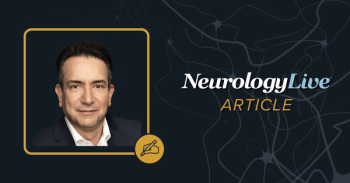
Epilepsy Prevalence and Therapy Resistance
Amit Verma, MD: Many patients are not convinced that they have epilepsy and require treatment, especially after the first seizure. There’s always a reason why people think they might have had that first seizure, whether it’s being sleep deprived, if they’ve had excessive alcohol intake, or if they’ve been traveling somewhere. In hindsight, a lot of them try to blame it on some other event that could have caused that first seizure. It’s common for patients to resist treatment, especially if they haven’t had any injuries related to those seizures. Many times, patients are unconvinced that they’re going to have another seizure, and they have heard bad things about medications. There is a lot of resistance for them starting medication at that point.
There is a growing awareness of epilepsy in patients. It’s certainly more likely to present to a physician if they’ve had a seizure or if they have ongoing seizures. It’s a difficult question to answer whether the overall incidence and prevalence is changing, but there’s certainly much more awareness such that people are much more willing to present to physicians if they’ve had a seizure. There also used to be a social stigma associated with the diagnosis of epilepsy. Even though there’s still that stigma, a lot of patients are more willing to admit that they’ve had a seizure and then present to a physician for treatment.
We used to have a whole category of seizures in epilepsy that we used to lump under the term idiopathic, where we didn’t know why they had a seizure. There is a growing awareness that things like autoimmune etiologies may play an increasing role in some of these patients who were thought to have some form of idiopathic epilepsy. With advanced imaging techniques, we’re able to identify lesions in the brain that we were not able to identify before. Even in older patients who present with a new diagnosis of epilepsy, we oftentimes find a baseline cortical dysplasia that could have caused that person’s seizure. This would never have been picked up in the years before, especially given the fact that our understanding of the causes of epilepsy and our imaging modalities were not as robust as they are now.
The main tests we perform in patients we’re trying to diagnose with epilepsy would be an EEG [electroencephalogram] and then an MRI scan of the brain. Despite the advances, especially in imaging and on the MRI side, where we’ve gone from 1.5 Tesla MRI machines to 3 and now 7 Tesla MRI machines, the testing often comes back normal. The number that is agreed upon is around the 50% mark, where MRIs can be normal. An EEG is snapshot in time for a particular patient, so around 50% of EEGs can be normal after the first is performed. That’s a big problem for a lot of patients because they’ve often had a life-altering event, and the testing comes back normal a big percentage of the time.
Newsletter
Keep your finger on the pulse of neurology—subscribe to NeurologyLive for expert interviews, new data, and breakthrough treatment updates.



























